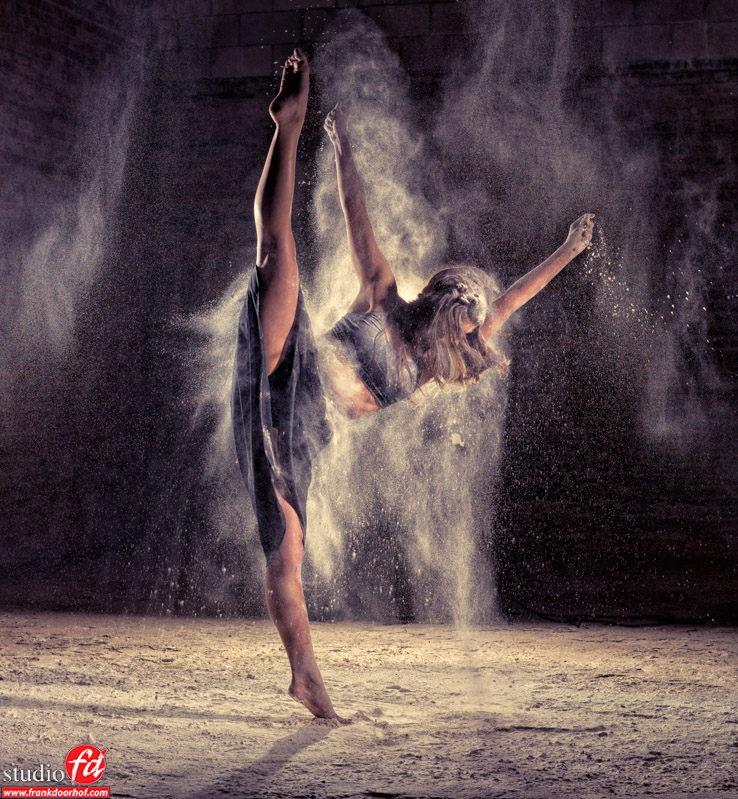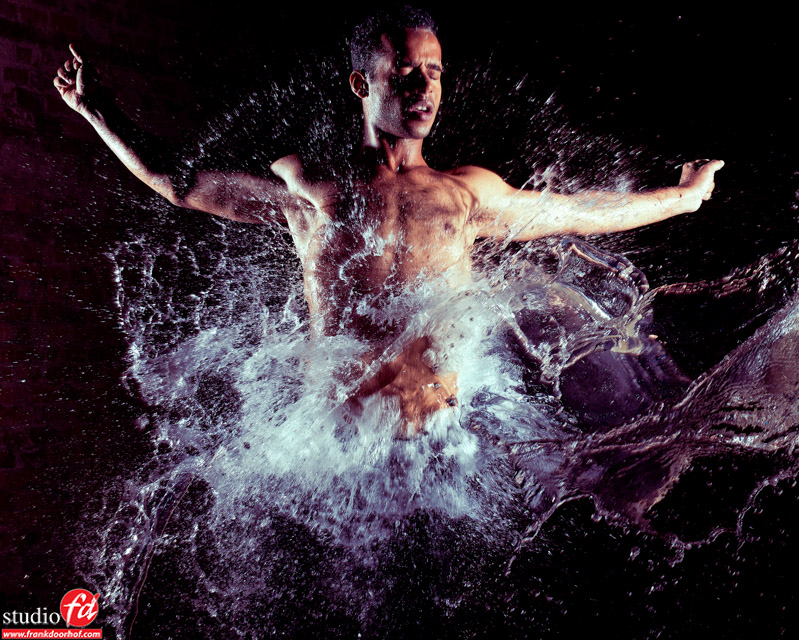Beware of your shoots
Today a quick tip that might safe your life one day.
Over the years we’ve done some crazy stuff, however I (and my team) were always aware of the dangers when we shoot something that is considered dangerous. Now I see a lot of shoots online with water and for example baking flour (which I did for Kelbytraining in my class the art of dance). However I also know that a lot of people don’t really know what they are doing and how dangerous shoots like these can be. So today a few tips to make sure (although there is never a sure in these kind of cases) you don’t kill yourself or your model 😀
1. Wide open spaces
As soon as you start throwing stuff there is a huge chance of static electricity.
This is actually a quote from wisegeek.org but it tells you everything you need to know.
“Air Dispersal Requirement
Flour is not prone to explode all on its own — individual grains must be separated and exposed to oxygen for there to be any risk. When stored in densely packed bags or containers, the chances of fire are quite low. Explosion becomes likely only when individual particles are suspended in the air, usually in the form of a dust cloud. Dust clouds in confined spaces both allow the starch molecules ample access to oxygen, and prevent escape — under these conditions, any heat or heat source can set the sugar molecules ablaze. In large quantities, this has a very explosive effect, and can be deadly.”
Now if you really want to do a flour shoot (and who doesn’t let’s be honest), make sure that you do the shoot in a wide open space, so you have a lot of room, also make sure that your strobes are far away from the area where the dust is in the air. And even then always realize that you DO take a risk, but if you’re smart about it you actually do limit the risk a lot but please don’t put strobes in the area where there is a lot of dust, because that “boys and girls” is really asking for trouble, especially in a small room.
2. Water
Now we all love water right?
It’s great for when you’re thirsty and it’s great to work with on models, but it’s also VERY dangerous when combined with electricity.
So when you want to do a water shoot make sure that you take precautions.
As with the flour tips, just using your head will actually help a lot.
For example it’s not wise (not to say incredibly stupid) to put your model in a pool of water and put your strobe with power cable in the same pool…. now some people will say “yeah duh Frank we’re not stupid” however what a lot of people don’t realize is that just a simple “connected” pool of water is enough to “at least” hurt someone.
So when we do shoots with water I will always take care that :
1. The strobes are far away from the water, the strobe will not be hit by it.
2. I will use ranger packs, so no strobes in the power outlet.
3. ALL cables will be OFF the ground, there is a lot of power going through those cables, just hold a ranger cable for fun when you shoot on full power and you will feel what I mean. If there is a small damage in the cable and it’s on the floor and is somehow connected to the water you don’t want to be there.
4. Although manufactures claim that certain gear is waterproof I will still cover it up with plastic (with an option to let it breath) if I need it closer.
In fact this all boils down to common sense one would say, still I’ve seen backstage videos from shoots where I was just waiting for an accident to happen and was thinking “How could they do that just for a shot” and this last sentence is what I want to end with.
Getting the shot is the most important thing for me (and many with me) however there are many ways to get the shot, if you need your lights closer use a “thicker” grid to get a similar effect, if you really need that light to be in the water…. don’t do the shoot or use special underwater cases. We only life once and we take A LOT of shots during our life make sure that your last shot is not one with water or flour……
Good luck 😀




Hi Frank.
Great advice here, thanks a lot.
For my powder shot (with smaller amounts of powder) I used Baby powder. It’s more comfortable for the model, works good and doesn’t travel that far in the air, the particles seem to be heavier. And, since it is aimed at small infants, there are no health risks involved.
I don’t know whether it’s prone to be exlosive, but I doubt it. Have you any experiences with this?
Best regards
Mattes
No experience with that but I guess that if there is static electricity there always is a risk.
Note that every powder has the risk of exploding.
Powder explosions are even much more dangerous then gas explosions.
For gas, you will need the exact mixture of oxigen and gas to get an explosion.
For powder, there is no “exact mixture”.
You can try and see what happens if you have cream powder and let a bit drop on a flame.
Just do a search on youtube to powder explosion or fine dust explosion.
I’m also interested in the answer to Mattes’ question.